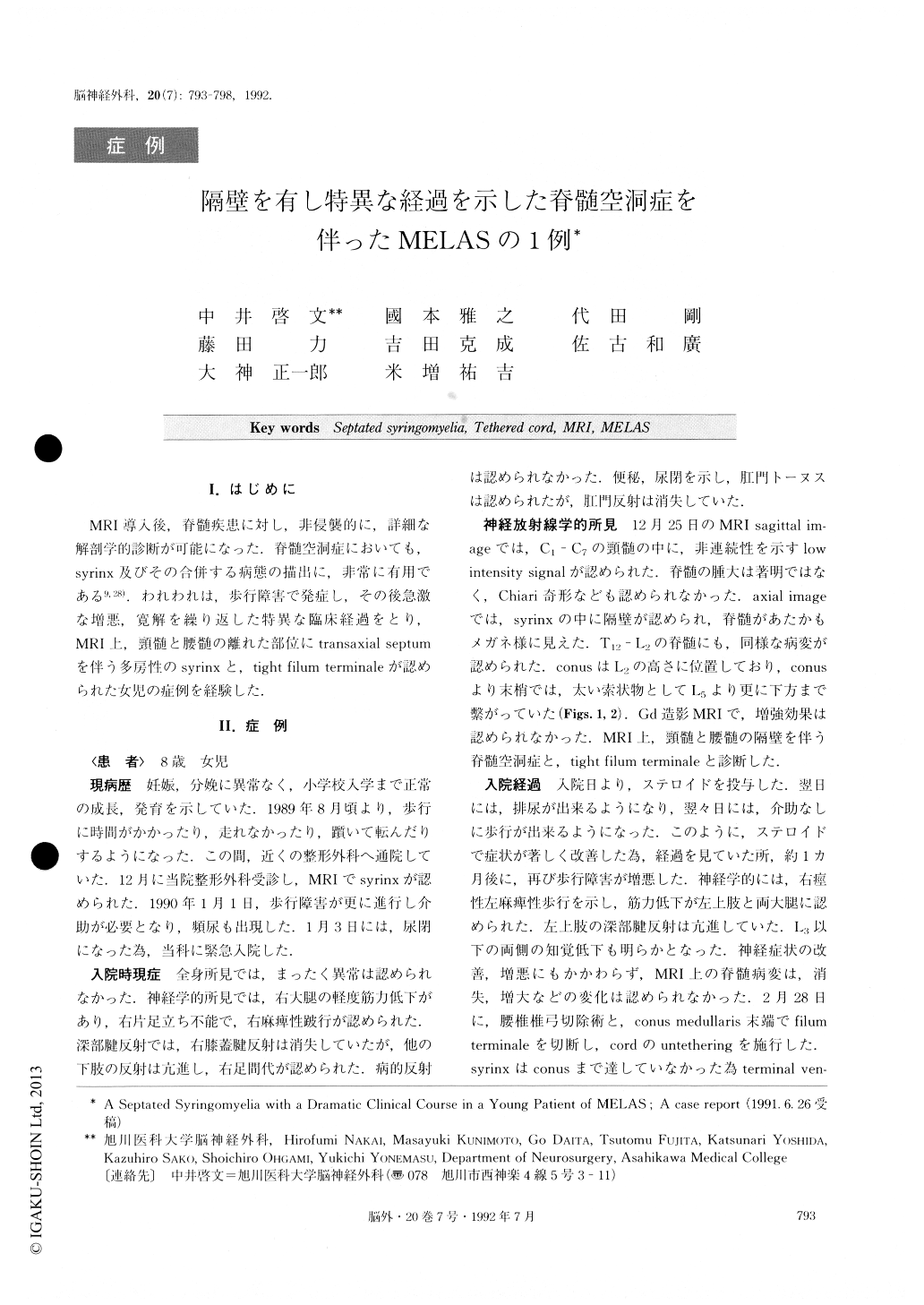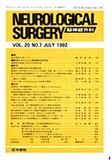Japanese
English
- 有料閲覧
- Abstract 文献概要
- 1ページ目 Look Inside
I.はじめに
MRI導人後,脊髄疾患に対し,非侵襲的に,詳細な解剖学的診断が可能になった.脊髄空洞症においても,syrinx及びその合併する病態の描出に,非常に有用である9,28).われわれは,歩行障害で発症し,その後急激な増悪,寛解を繰り返した特異な臨床経過をとり,MRI上,頸髄と腰髄の離れた部位にtransaxial septumを伴う多房性のsyrinxと,tight filum terminaleが認められた女児の症例を経験した.
This is a report of a young girl who showed a recur-rence of acute worsening and remission of neurological manifestations, with consistent MRI demonstration of transaxial septated syrinxes in the cervical and the lum-bar spinal cord in addition to a tight filum terminale.
This 8 year-old girl had developed normally since her birth until August 1989 when she developed a gait dis-turbance. This worsened acutely on January 1, 1990, with the additional manifestation of a urinary bladder disturbance. General examination failed to show any abnormality or scoliosis. Neurologic examination re-vealed a monoparesis of the right lower extremity with muscle atrophy and pyramidal tract sign. Fecal con-stipation and urinary retention were noted. The MRI T1 weighted sagittal image demonstrated an incon-tinuous low intensity signal in the C1-C7 as well as in the T12-L2., without swelling of the cord. The axial im-age clearly demonstrated the septations in the syrinx which looked like eye glasses. No definite Gd enhance-ment was demonstrated. Chiari malformation was not associated, but the tethered cord was well identified. With the administration of steroid, she showed a marked improvement of neurological manifestations. She was able to urinate without difficulty and also walk by herself. For one month thereafter she remained well with minor neurological deficits until she de-veloped a worsening of the gait disturbance with a newly manifested weakness of the left upper extremity. Sensory impairment was also demonstrated below L3. In contrast to the worsening of the clinical symptoms, no definite change in the abnormalities found by MRI was noted. A simple untethering without a terminal ventriculostomy was performed resulting in the dis-appearance of the syringes three months after the op-eration, but neurological abnormalities still persisted. This patient developed cerebral infarctions in the bi-lateral occipital lobes six months after the operation. The diagnosis of MELAS was made from the findings of blood lactic acidosis and ragged red fibers in the skeletal muscle.
The clinicopathological meaning of her dramatic clin-ical course and the septations in the syringes were dis-cussed in relation to MELAS. From our experience, less invasive surgical operation should be stressed for the treatment of this type of syrinx.

Copyright © 1992, Igaku-Shoin Ltd. All rights reserved.


